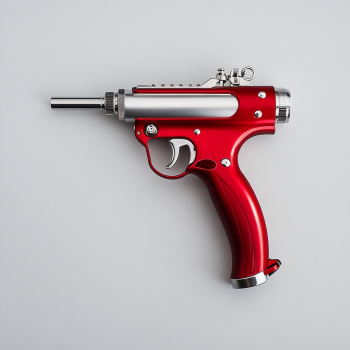Spray guns are essential tools in various industries, including automotive, manufacturing, and construction. They are used to apply coatings such as paint, varnish, and other finishes to surfaces. Two common types of spray guns are high-pressure air spray guns and low-pressure spray paint guns. This article will delve into the key differences between these two types, their advantages, disadvantages, and suitable applications.
High pressure air spray gun uses a high-pressure air stream to atomize the paint or coating material. The paint is forced through a small nozzle, creating a fine mist that is sprayed onto the surface.
Key Advantages of High-Pressure Air Spray Guns:
Faster Application: High-pressure spray guns can apply paint at a faster rate, improving efficiency.
Better Atomization: The high-pressure air stream creates a finer mist, resulting in a smoother and more even finish.
Thinner Coats: High-pressure spray guns can apply thinner coats of paint, reducing material waste.
Versatility: They can be used with a wide range of materials, including paints, varnishes, and primers.
Key Disadvantages of High-Pressure Air Spray Gun:
Overspray: High-pressure spray guns can produce more overspray, which can waste material and create a messy workspace.
Higher Air Consumption: They require a higher volume of air to operate, which can increase energy costs.
Operator Skill: Operating a high-pressure spray gun requires more skill and experience to achieve a consistent finish.

Low pressure spray paint gun uses a lower air pressure to atomize the paint. They are often used for smaller projects or when a finer finish is desired.
Key Advantages of Low-Pressure Spray Paint Guns:
Less Overspray: Low-pressure spray guns produce less overspray, reducing material waste and improving efficiency.
Lower Air Consumption: They require less air to operate, which can reduce energy costs.
Easier to Use: Low-pressure spray guns are generally easier to use and require less operator skill.
Finer Finish: They can produce a finer finish, especially when used with higher-quality paints.
Key Disadvantages of Low-Pressure Spray Paint Guns:
Slower Application: Low-pressure spray guns may take longer to apply paint compared to high-pressure spray guns.
Thicker Coats: They may require multiple coats to achieve the desired coverage.
Less Versatility: Low-pressure spray guns may not be suitable for all types of materials or applications.

The choice between a high-pressure air spray gun and a low-pressure spray paint gun depends on the specific requirements of the application. Factors to consider include:
Material: The type of material being sprayed will affect the choice of spray gun.
Finish Quality: If a very fine finish is required, a low-pressure spray gun may be better suited.
Speed: If speed is a priority, a high-pressure spray gun may be more efficient.
Overspray: If overspray is a concern, a low-pressure spray gun may be preferable.
Operator Skill: Consider the skill level of the operator and the ease of use of each type of spray gun.
By carefully evaluating these factors, you can select the most appropriate spray gun for your specific needs and ensure a high-quality finish.



 CALL US:
CALL US:  Email Us:
Email Us:  East wing, Bldg 11, Zone A, No.2 Jintang N.Rd.,Eastern new city Wenling, Zhejiang China,317511
East wing, Bldg 11, Zone A, No.2 Jintang N.Rd.,Eastern new city Wenling, Zhejiang China,317511